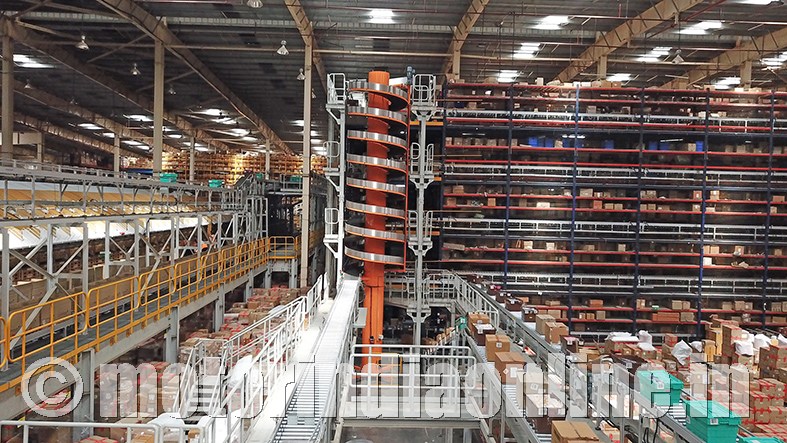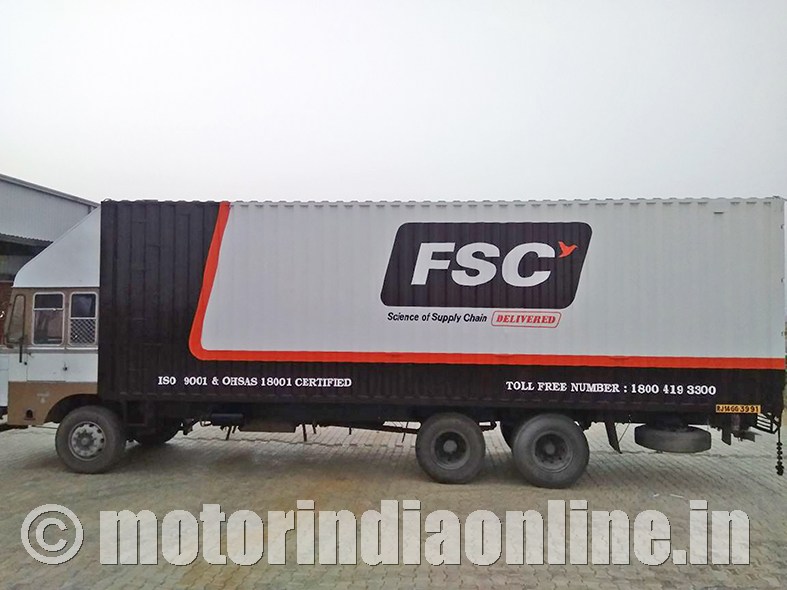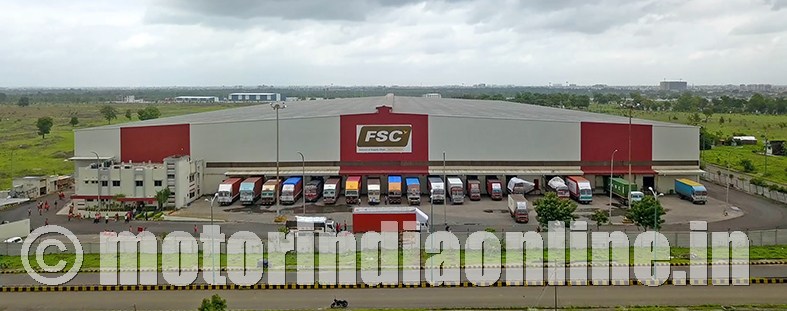In an exclusive interaction with MOTORINDIA, Mr. Hiren Ladva, National Head, Business Development & Marketing, Future Supply Chain Solutions Ltd., articulates FSC’s ‘Glocal’ quality standards for India.
Give us a brief background of the company’s presence and growth in India, with an insight into the company’s infrastructure (locations, fleet size, employees, etc.) in India for both dry and temperature-controlled cargo.

Future Supply Chain (FSC) is one of the leading third-party logistics companies with nationwide coverage of 11,322 pin codes through its express network. Warehousing footprint of FSC is across 68 locations (4 of which are part of Cold chain). The aggregate warehousing space under operation is approximately 60 lakh sqft.
The company has handled 164k tonnes of cargo in 2018 and clocked in a turnover of Rs. 775 crores, registering a growth of 38% over the previous year. The recent acquisition of Vulcan Express from Snapdeal has boosted last-mile delivery capabilities of FSC to over 2,000 pin codes.
Give us details about your fleet size, both for dry cargo and temperature-controlled trucks and efforts to acquire and maintain them to ensure efficiency with minimum downtime. Highlight any specific program or measures taken to ensure driver comfort and retention.
FSC has a dedicated fleet of 887 vehicles. Of these, 522 are deployed for contract logistics, 249 for the Express network and 116 catering to cold-chain operations.
Frequent audits of the fleet and documentation are carried out from the compliance perspective.
FSC regularly conducts training of drivers with a view to familiarizing them with best practices. FSC has strong relationships with sub-vendors and commands a high degree of reliability, standardization in processes and cost optimality while it deploys the vehicles for service.
An effective supply chain involves procuring the goods, storage facilities and delivery of products (or finished products) to the exact location. Apart from these, some of the other parameters ensuring smooth operations are time, the mode of transportation and the cost. Please help us with the planning and strategies implemented at Future Supply Chains to ensure a smooth functioning of the integrated supply chain.
At Future Supply Chains, we have formulated our strategies in three big areas – Technology, Integration and Mobility.
Technology – We have put technology at the forefront across the entire supply chain network – be it world-class cross belt sortation system, Wireless Warehouse Management System (WMS) technology, Put to light Technology, Voice to Pick technology or Boom Conveyers. This has allowed us to reduce costs and increase productivity throughout our supply chain.
Integration – We have added 1 million sqft of modern BTS facilities and further signed 2 million sqft to readily service our customers who want to consolidate warehouses post-GST implementation. We have set up a control tower network in our transportation to service 11,322 pin codes in all three legs – primary distribution, secondary distribution and last-mile delivery.
Mobility – We are now using cutting-edge mobile technology in our supply chain over more traditional industrial equipment to give real-time visibility to our customers and also creating an algorithm logic to re plan and increase efficiencies.
What would Future Supply Chains consider its core USPs, and how is the company different from other players in the industry?
FSC is known for its operational experience, pan-India presence and as one of the pioneers of technology adoption in SCM (Supply Chain Management) in India. We continue to differentiate ourselves based on these capabilities along with a measurable value addition and assurance of reliable service.
We have convinced several customers on moving to a WMS-enabled modern warehouse for getting higher throughput, better visibility and reduction in costs by as high as 20%. We have effected transformation of one of the most complex supply chains during India’s modern retail revolution. So our strategy is simple – address our client’s SCM pain areas and deliver value against those using technology and leveraging our experience in the Indian environment.
As we speak, we are adding 30 lakh sqft. to our warehousing area on the back of signed up orders. Continually adding to our distribution network every week and covering newer pin codes speedily from our current 11000+ and boosting our last-mile capabilities to nearly 3000 by year end. We are a well-equipped and possibly the most experienced 3PLs to cater to almost all consumer businesses like food, FMCG, apparels, general merchandise, consumer durables, home & furniture as well as auto, electrical and engineering sectors.
How has the GST roll-out impacted your company’s operations in India? Have you been able to pass on the value to your customers? Have the fluctuating domestic oil prices been hard on the freight rates?
Consolidation of warehousing operations in the light of impending tax changes was initiated as early as in 2011, by FSC’s visionary management launching MIHAN – DC (Multimodal International Hub at Nagpur – Distribution Centre) in March 2013.
The key advantages and efficiencies realized are:
- Economies of scale in both fixed asset deployment and also reduced overheads while simultaneously using automation for intricate processes.
- Deployment of a strong operations team and adequate infrastructure (also manpower) to manage peak loads without buckling.
FSC’s vast experience in transportation means we factor in a variance of 10% fuel prices in contracting rates on routes. So long as the crests and troughs are within the range, we don’t let the eventual customer be impacted. Beyond this we levy excess or credit the benefit to keep the transaction transparent. Customers are assured of rates without having to spare bandwidth to delve into daily fluctuations of fuel prices.
The Internet of Things, intelligent software, automatic identification technology such as RFID, 3D printing and enterprise applications, have accelerated the maturity of the supply chain. What do you think is the next big wave in the logistics technology and what, according to you, will be able to maintain a fine balance between people and technology?
Logistics as a Service (LAAS) on the lines of Software as a Service (SAAS) is a key trend to watch out for. With proliferation of predictive models of supply chain and reluctance of organizations to invest in infrastructure, service providers are cloudifying every aspect of SCs. Space and Fleet are two key aspects which will move towards Uberization with individual asset owners using Web/App tools to assets to meet short term demands.
“We can’t manage what we don’t measure” is a popular adage and holds true for a supply chain. Do you help your clients with sustainable supply chain solutions while managing their inventory? This could be through shared interfaces/software or anything else that we are not aware of. Please give a few instances where you have been able to do so.
Modern warehouses and fleets are being transformed into Glass-Houses from earlier Black-Boxes – more metaphorically than just physically. All of these provide a higher degree of visibility to customers into holding, throughput and accuracy of their inventory. Warehouse Management Systems, Transport Management Systems and Vehicle Tracking systems integrated with ERPs bring in high degree of confidence of fulfilling demands of an eventual consumer reducing any sales loss due to stock-out.
The extensive data collected by these systems when mined can result in a predictive supply chain and act as a differentiator and clinching a sale over a competing product in the constantly changing consumer market.
Do you dedicate vehicles to specific clients? If so, what do you do in case of less-than truck load (part loads, if any)? How do you manage full asset utilisation?
A contract logistics customer has some degree of certainty on daily loads as it is a defined movement basis volume projection provided. We run analytics basis past data on seasonality, day of the month to predict load and hence plan transportation better.
Aggregation of loads heading for the same destination is done with consent from parties to bring in optimality of freight, the benefit of which is enjoyed by all. For an express logistics customer (purely transport), aggregation of load is done at branches before loading the vehicle.
Highlight a few growth indicators that have helped you grow. Do share your percentage of growth and annual turnover, if possible.
The annual turnover clocked in FY 2017-18 is Rs. 775 crores, which is an increase of 38% over Rs. 561 crores clocked in FY 2016-17. The key engines of growth are external customers in new age industries, e.g., e-commerce, who have understood the importance of a strong partner with capability to scale and remain agile to deliver on growth spurts.


